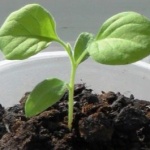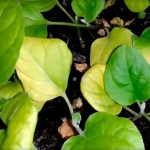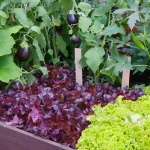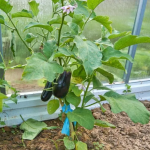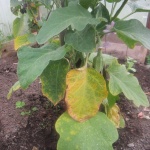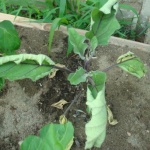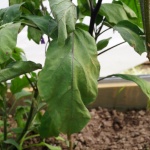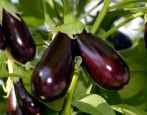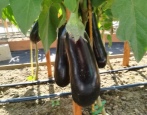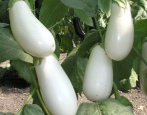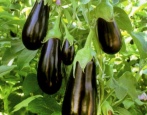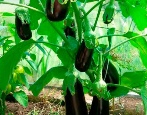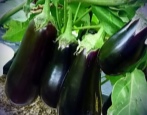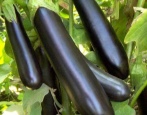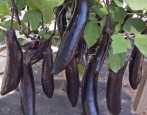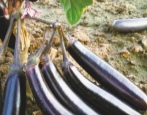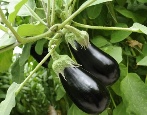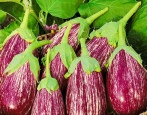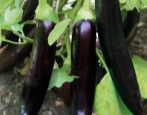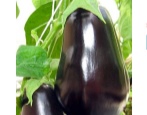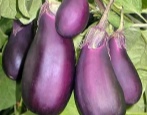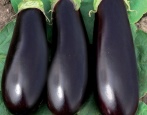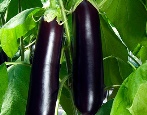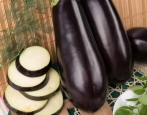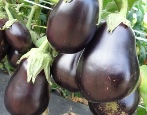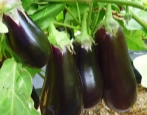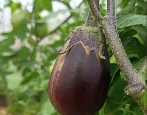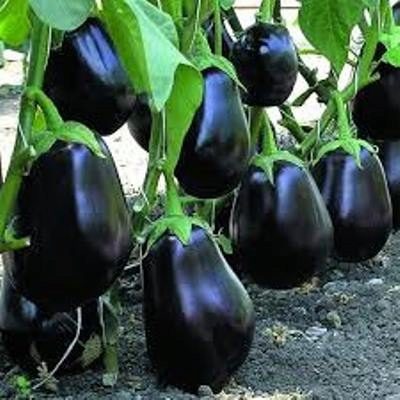
- Name synonyms: Clorinda
- Year of approval: 2007
- Growth type: vigorous
- Bush height, cm: more than 200
- Fruit shape: oval
- Fruit weight, g: 300-320
- Yield: high yielding
- Fruit color: dark purple
- Ripening terms: early-mid-early
- Pulp (consistency): dense
For those gardeners who do not have enough experience in growing eggplant, a real find will be the Clorinda hybrid with an early ripening period, which appeared in Holland. To grow a crop and get a good harvest, it is enough to familiarize yourself with the peculiarities of the hybrid, the intricacies of agricultural technology.
Breeding history
Clorinda eggplants appeared thanks to the works of Dutch scientists of the Monsanto agricultural holding in 2005. The hybrid was developed using the latest biotechnology, combining many advantages - from excellent taste to quick adaptation to the climate. The vegetable culture was added to the State Register of approved for use in all regions of Russia in 2007. The hybrid is recommended for growing on garden beds and in greenhouse structures.
Description of the variety
The Dutch eggplant grows as an erect, vigorous bush, the height of which can reach 180-200 cm. The plant is characterized by a thick central stem with shortened internodes, medium thickening of emerald green leaves with a rough cover, developed rhizome and medium spreading of branches. A distinctive feature of the bushes is the lavender color of the stems due to the small amount of anthocyanins, as well as their moderate, in places intense pubescence.
During the flowering period, pale purple flowers appear on the bushes, located alone. On a healthy eggplant bush, a considerable number of leveled specimens mature.
Characteristics of the appearance of plants and fruits
The Clorinda hybrid is a large-fruited species. The average weight of a vegetable is 300-320 grams (length 20-22 cm), but eggplants weighing 500-600 grams ripen quite often. The shape of the fruit is unusual - oval. Unripe fruits have a pale burgundy color, absolutely ripe specimens are evenly covered with a dark purple color. Sometimes the fruits take on a brilliant black color. The peel of a vegetable is of medium density, quite firm, glossy, without surface irregularities.
Ripe eggplants can easily tolerate transportation, and the fruits have a long shelf life.
Purpose and taste
This eggplant species captivates with its excellent taste. The snow-white pulp is quite dense, fleshy, tender, without wateriness and fibrillation. The fruit has a pleasant taste, slightly oily, delicate, without bitterness and pungency. Many people note the presence of a mushroom flavor in vegetables and a pronounced aroma. It is important to note that there are practically no seeds in the pulp. The product contains a high content of potassium, as well as copper and iron salts.
The harvested crop can be used in different ways - to cook hot and cold snacks, pickle, freeze, bake, and can also.
Ripening terms
The hybrid is considered medium early, although many experienced growers classify it as an early variety. From mass germination to the appearance of the first ripe fruits, 67-70 days pass. Fruiting in a culture is long, that is, extended.The peak of fruiting occurs in July. It is necessary to carefully control the appearance of ripe specimens on the bushes, since overripe fruits begin to taste bitter and deform.
Yield
High-yielding hybrid. When planting eggplants in open ground, you can count on an average of 2.8 kg of vegetables harvested from 1 m2 of plantings. In greenhouses, the figures are slightly higher - up to 5 kg / m2.
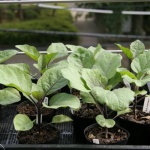
To get a tasty and bountiful eggplant crop, you must first grow strong and healthy seedlings. This culture is considered very capricious, therefore, you need to take care of seedlings when growing at home as correctly and carefully as possible.
Landing scheme
When cultivating a vegetable, a number of nuances should be taken into account - planting density and the distance between plantings. It is recommended to place no more than 3-4 bushes per 1 m2. Landing is usually carried out according to the 40x60 cm scheme.
Growing and care
The vegetable is cultivated through seedlings. Sowing seeds for seedlings is carried out in February. At the age of 2 months, the bushes are transplanted to a permanent place. Planting on a ridge or in a greenhouse is carried out from late May to early June. Melons and legumes are considered the best predecessors for culture.
Agricultural technology consists of frequent watering, fertilizing 2 times a month, weeding, loosening and mulching the soil, forming bushes in 1-2 stems, tying them to trellises, removing side shoots and thinning foliage, preventing diseases.
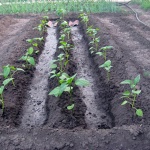
Planting eggplant is one of the most important stages in growing. When choosing a place for eggplants on your site, it is important to remember that this culture should be in warm soil, constantly illuminated by the sun. The plant is also very fond of spacious, open spaces, since its roots can grow over sufficient areas.
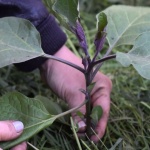
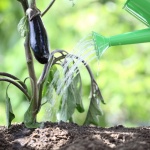
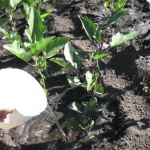
Soil requirements
The vegetable does not have special requirements, but it is desirable that the soil be nutritious, fluffy, light, and pass moisture and air well. It should be borne in mind that eggplants do not like acidic and swampy soils. The most favorable will be sandy loam and chernozem substrates.
Required climatic conditions
The Clorinda hybrid is quite stress-resistant, therefore it is able to withstand sudden cold snaps and temperature fluctuations. It is comfortable to grow a crop in a sunny, well-lit area with a barrier from drafts and gusty winds.
Disease and pest resistance
The Clorinda variety has good immunity, therefore, it is absolutely resistant to the tobacco mosaic virus, and is also tolerant to fusarium and verticillosis.

Eggplant is one of the most demanding crops. For its successful cultivation, it is necessary to create optimal conditions, as well as to carry out prevention and fight against diseases and pests.Eggplant often infects both fungal and viral diseases. If treatment is not started on time, you can completely lose the crop.

